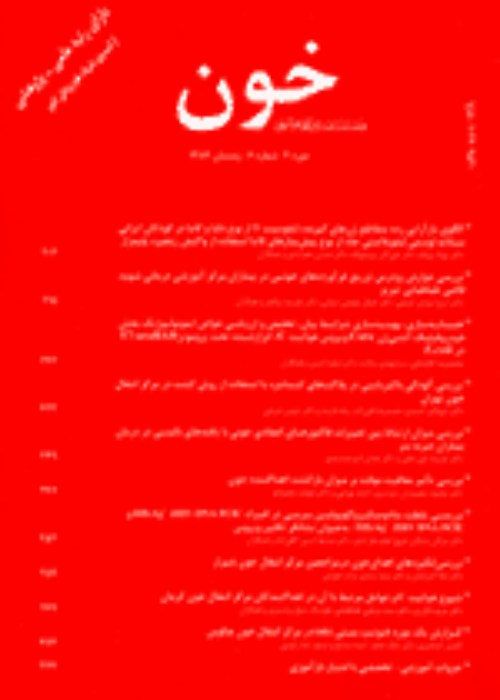Cytogenetic study of prognostic determinants in children with acute lymphoblastic leukemia
Author(s):
Abstract:
Background and objectivesAcute lymphoblastic leukemia though the most frequent malignancy in children has well responded to medical treatment as compared with other types of malignancies in recent years. In addition to age, sex and number of white blood cells, genetic survey has been one of the prognostic determinants. This research has been carried out on children diagnosed after being referred to Mofid Children Hospital during a period of three years. This study aims at determining the factors effective on prognosis of lymphoblastic leukemia with an emphasis on patient acute karyotype. Materials and MethodsOut of 102 patients with the diagnosis of acute lymphoblastic leukemia being referred to this hospital between 1990-2002, 74 (within the age groups varying from 6 months to 13 years old) underwent cytogenetic test; out of the latter 28 were excluded. These 74 were classified according to their WBC count and age into high (42 cases) and low risk groups (32 cases). Then, the results were analyzed and compared according to the subfactors such as flowcytometry, age, sex, and blood cell count (WBC, hemoglobin and platelet) both in high and low risk groups. ResultsFrom 74 cases under study, flowcytometry showed that 64 (86.5%) suffered from leukemia type pre B cell; out of the latter 38 (59.4%) based on the number of white cells were placed in the low-risk group. In cytogenetic survey, 34 (45.9%) patients had normal karyotype, 16 (21.6%) had abnormality of chromosome number, and 14 (19%) abnormality of chromosomal structure. No conclusion could be drawn from cytogenetic test conducted on the remaining 10 cases. Comparison of the two groups of high and low risk showed no significant differences. From gender point of view, number of boys was considerably higher than girls in the low risk group (61.9% vs. 39.1%). But as far as karyotype was concerned, there were no differences between the two groups. ConclusionsRegarding the research findings, there was no significant difference between the two groups from genetic disorders point of view. Accordingly, we can conclude that age and number of WBC by themselves are not suitable preliminary factors for prognosis and genetic determination in genes domain. So, it seems necessary for a similar research at a larger scale to be conducted in which prognostic determinants are complied with disease trend.
Language:
Persian
Published:
Scientific Journal of Iranian Blood Transfusion Organization, Volume:5 Issue: 2, 2008
Page:
117
magiran.com/p556875
دانلود و مطالعه متن این مقاله با یکی از روشهای زیر امکان پذیر است:
اشتراک شخصی
با عضویت و پرداخت آنلاین حق اشتراک یکساله به مبلغ 1,390,000ريال میتوانید 70 عنوان مطلب دانلود کنید!
اشتراک سازمانی
به کتابخانه دانشگاه یا محل کار خود پیشنهاد کنید تا اشتراک سازمانی این پایگاه را برای دسترسی نامحدود همه کاربران به متن مطالب تهیه نمایند!
توجه!
- حق عضویت دریافتی صرف حمایت از نشریات عضو و نگهداری، تکمیل و توسعه مگیران میشود.
- پرداخت حق اشتراک و دانلود مقالات اجازه بازنشر آن در سایر رسانههای چاپی و دیجیتال را به کاربر نمیدهد.
In order to view content subscription is required
Personal subscription
Subscribe magiran.com for 70 € euros via PayPal and download 70 articles during a year.
Organization subscription
Please contact us to subscribe your university or library for unlimited access!


